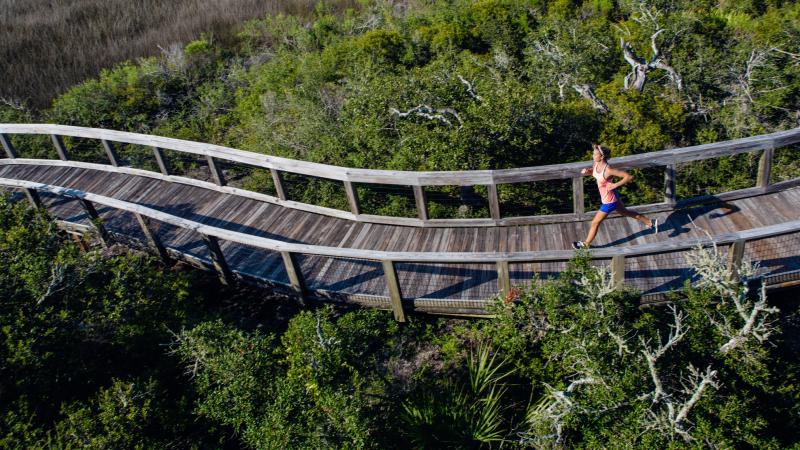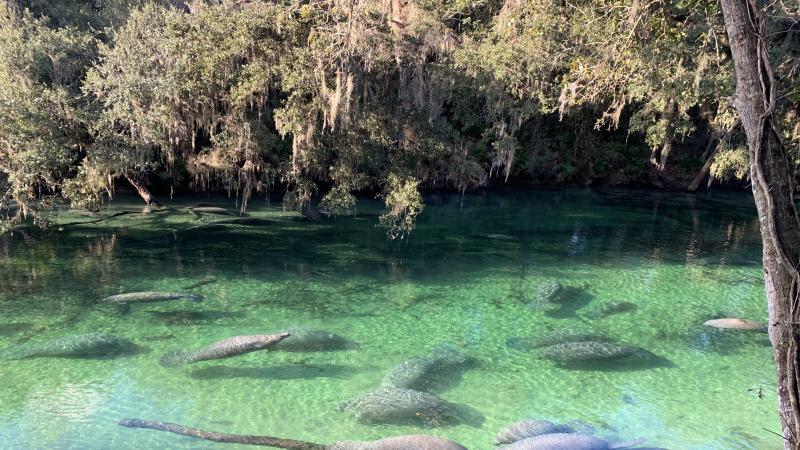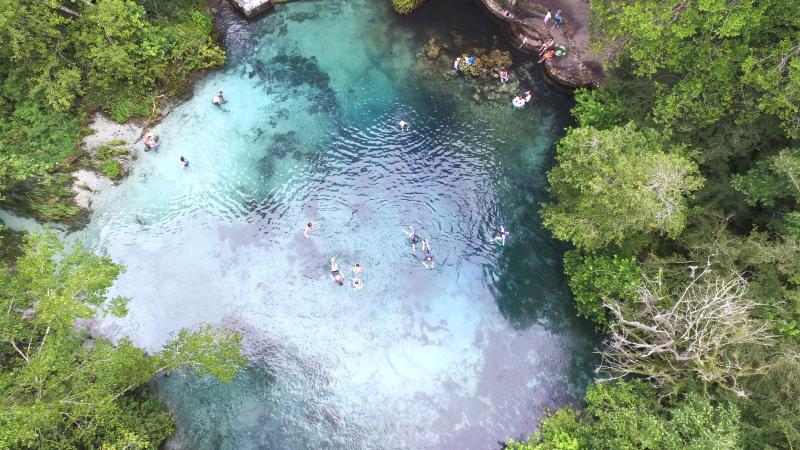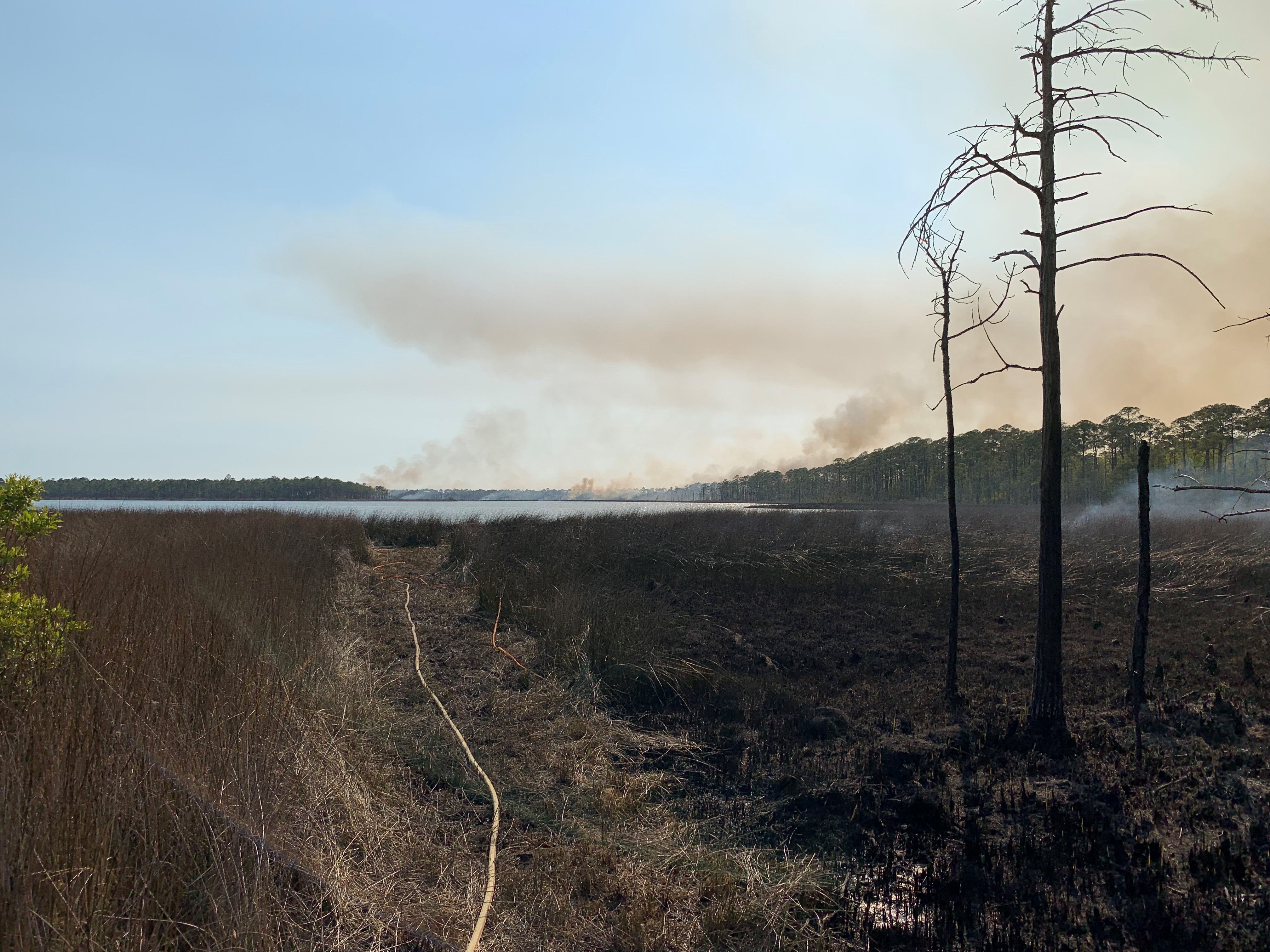
Burn Boss Q&A with Daryl Hatfield
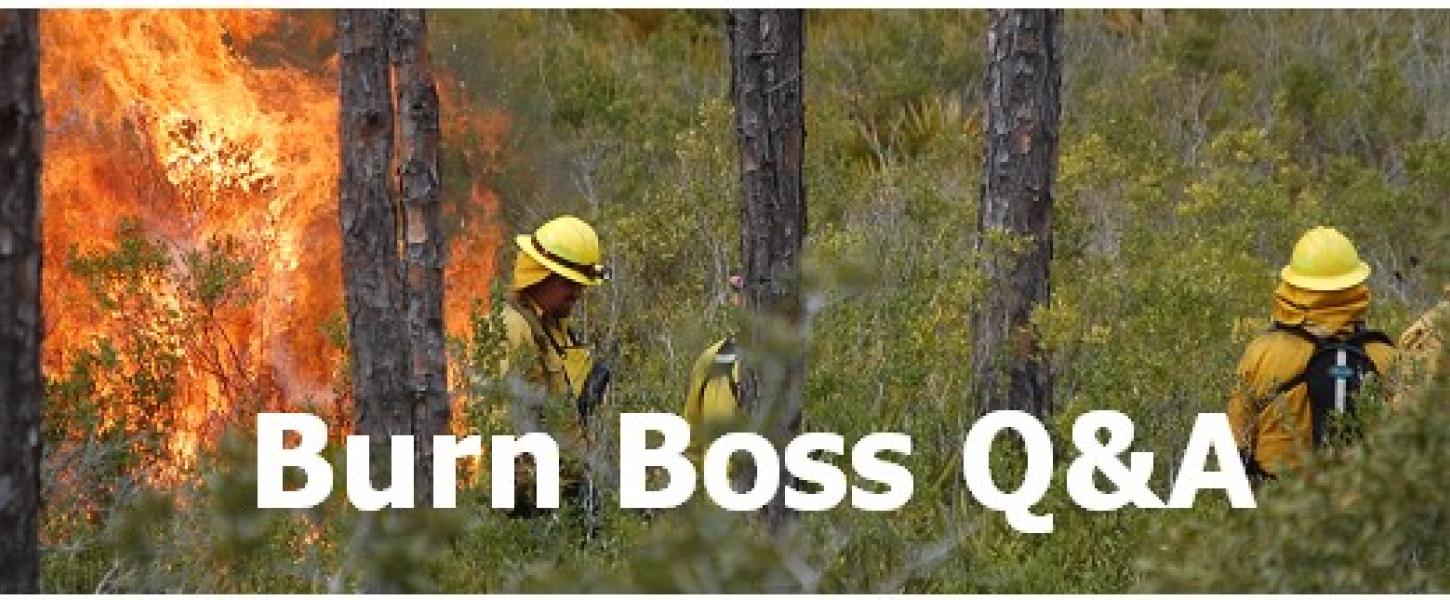
Interview with a Burn Boss: Daryl Hatfield
Is there a burn you participated in that stands out for its difficulty and success?
A little background on Tarkiln Bayou Preserve

Tarkiln Bayou Preserve was established in 1998 with funds from the Preservation 2000 Conservation & Recreation Lands (CARL) program. Over the years, several acquisitions have expanded the preserve to 4,470 acres. The unit is named for Tarkiln Bayou, which empties into Perdido Bay in Escambia County on the Florida/Alabama line. The history of the entire area is heavily associated with the turpentine industry. The namesake bayou was even named for a “tar kiln” located on the peninsula portion of the preserve. Historically, the Tarkiln peninsula has been home to an assortment of longleaf pine communities in addition to expansive wet prairies inhabited by a wide array of carnivorous plants.
Decades of fire exclusion prior to acquisition had left the property with heavy fuel loading, including an overgrowth of titi (Cliftonia monophylla). These highly volatile stands of titi create an unnatural mid-story of woody shrubs that burn with intense heat and hot embers for great distances. These are serious concerns on any prescribed burn, particularly in this wildland-urban interface setting, where urban areas are not far away from the burn site. Before a prescribed burn at Tarkiln Bayou, Florida Park Service staff must mechanically reduce these mid-story fuels or surround them with wide firebreaks to effectively isolate them deep within the burn area. This level of preparation is challenging, requiring specialized equipment, skilled operators and careful timing to avoid damaging sensitive habitat with vehicles. This work is difficult, costly and time-consuming. However, it is the reality of reintroducing fire into a severely overgrown landscape surrounded by a rapidly urbanizing area.
It all starts with planning
The most recent burn on the Tarkiln peninsula was the largest burn ever attempted by staff at the park. The burn block was made up of four management zones, totaling over 650 acres, an area almost as big as 500 football fields. This burn was years in the making. Longtime park biologist Anne Harvey spent nearly a decade at Tarkiln Bayou getting the burn zones located west of Bauer Road ready. It’s her dedication that made the burn possible this year. Anne recognized that one day we would be able to achieve this goal, but she also understood that it was not something that could happen overnight.
Fire lines and fuels
My early experiences at Tarkiln Bayou included long arduous days on the fire line. Even with extensive preparation, the fuel load and levels of plant growth remained high, making it difficult for ignition crews to gain access and even more challenging for holding crews to work around such intense heat. The heavy smoke produced by these initial fuel-reduction burns was another serious concern. The preserve is broken up by two very busy state roads and surrounded by even larger main commuter highways. There are dense subdivisions, commercial districts, schools, ballfields and the U.S. Navy’s premier aviator training center, all directly adjacent to the preserve. Not only are these smoke-sensitive areas, they are areas of direct public interface, bringing scrutiny to our resource management activities and requiring a heightened concern for our neighbors.
Public support is essential to our success, so “slow and careful” was the order of the day. Oftentimes, a single burn zone would take several days to complete. But Anne would always finish the day by telling us that it was all worth it, and that one day we would be able to do a lot more in one effort. We would just need to get the fuels in shape first.
One of the biggest limitations to successful prescribed burns at Tarkiln Bayou always has been fire line access through the various streams and areas of wet prairie and wet flatwoods. Anne also recognized the need for better fire line access at Tarkiln Bayou. This was one of her long-term career goals at the park. She worked with staff to improve access by repairing existing low water crossings and installing new ones. This work continues today, with eventual low water crossing and fire line improvements that will allow reliable access to all managed areas. Last winter, the Florida Park Service was able to mow and improve several fire lines at the park with help from the Florida Forest Service’s Prescribed Fire Enhancement Program, thus expanding our access well into the eastern portion of the preserve.
Weather, weather and more weather
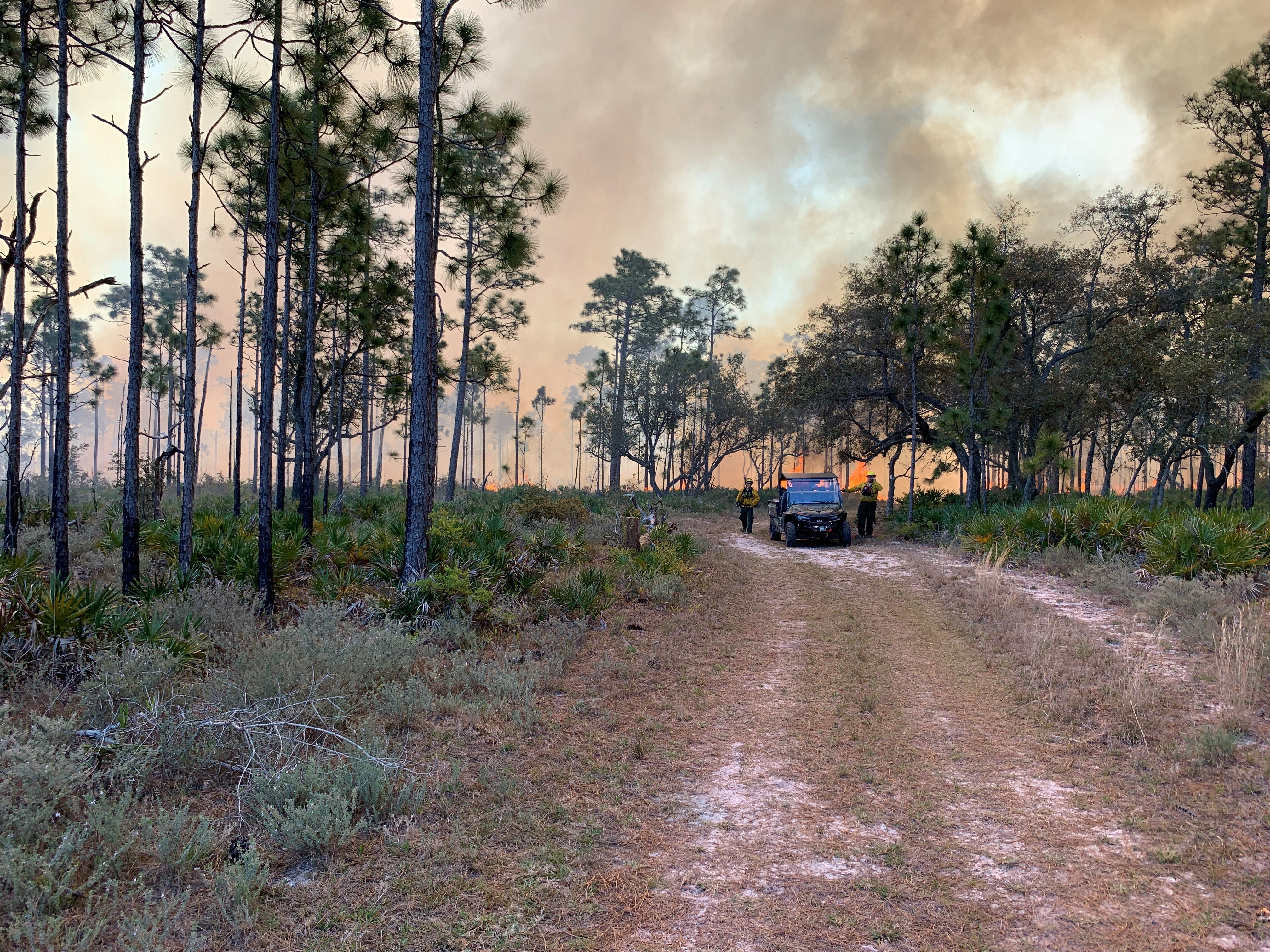
Another huge factor in conducting prescribed burns is the weather. This is especially evident at Tarkiln Bayou where the surrounding critical smoke-sensitive areas add significant complexity. For the peninsula burn, this left us with only one wind direction that would not impact our neighbors. With a school to the south, a major county roadway to the east, a Navy field and recreation area to the north, and a major bridge and commuter route to the northwest of the block, a northeast wind was the only acceptable option. We also had to time the burn so that the only roadway in, affectionately nicknamed “big muddy,” was dry enough to access the block but still wet enough to serve as an effective contingency firebreak.
It’s showtime! Partnerships make it happen
With all the planning complete, we were getting closer and closer to the actual day of burn. Kiersten Wilson, park manager and burn boss, started reaching out to area partners to make sure we had enough personnel available on the day of burn.
Thanks to Gulf Coast Plains Ecosystem Partnership (GCPEP), this was a relatively easy task. GCPEP is a group of federal, state and local conservation partners who work together in the Florida Panhandle. When the day of the burn arrived, we had partners present from the U.S. Navy, Florida Forest Service, Escambia County, the Longleaf Alliance, five state parks and the district office.
Quick thinking under pressure
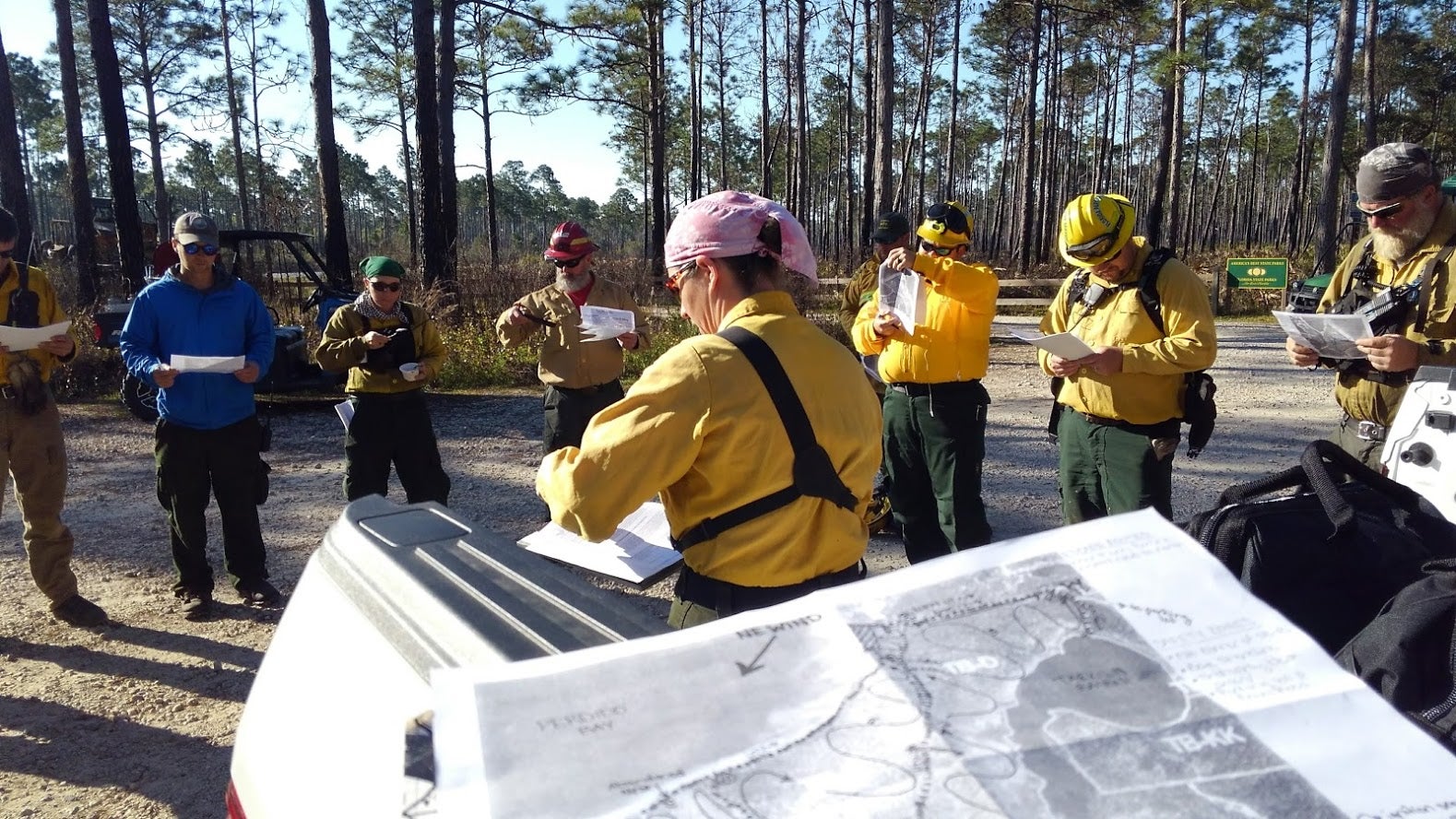
On the day of burn, we gathered for the usual briefing, including crew assignments, weather forecasts, and contingency plans in the event of something unexpected occurring. The forecast was good with steady northeast winds forecast for the entire day. It was still an early March morning, and the grass was a little wet from a morning dew and the passage of a late-season cold front the day before. This allowed burn crew who were not familiar with the unit more time to go on an orientation tour while we waited for the test fire — the first fire of the morning that helps us understand the day’s burn conditions.
When the go-ahead was given, everyone proceeded with their assignments. Everything was following the plan perfectly until about halfway through the day, when one of the worst-case scenarios occurred. We experienced a 180-degree, marine-influenced wind shift with our winds now blowing from the southwest. Essentially, a sea breeze had kicked in. Kiersten immediately halted ignition and all burn crew members pulled out to assess the situation and brief on how to handle this change in conditions.
Thanks to contingency planning and the combined experience of all the partners present, a new plan of action was quickly put in place, and the burn continued without incident.
It was worth the work
Considering all the partners involved, the coordination with field staff and the daily monitoring/assessment to identify a window of reliable weather, this was probably one of the most challenging planning endeavors for me. In the end, facing and overcoming these challenges through teamwork and positive attitude resulted in a milestone achievement.
Anne Harvey passed away in 2016. It provided great satisfaction to prove her right, knowing that her years of dedication, planning and hard work had led to a landmark prescribed burn for the preserve that served as a valuable learning experience for all those involved. The satisfaction was a natural landscape dotted with wildflowers and blooming wiregrass.
About the Author
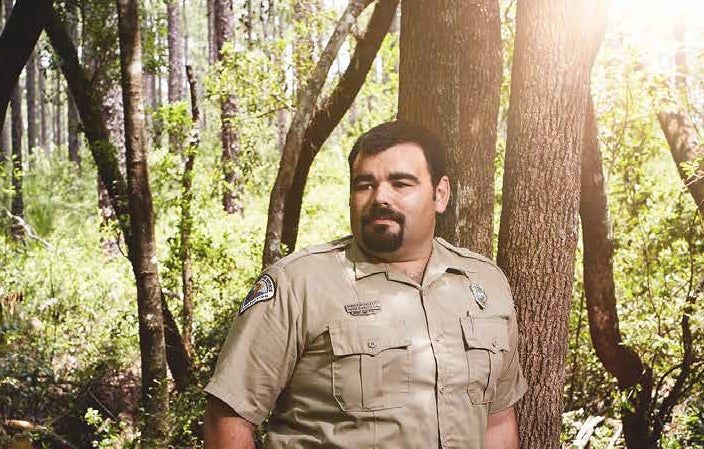
Daryl Hatfield has been with the Florida Park Service since 2007. He began his career as a park ranger at Blackwater River State Park and Yellow River Marsh Preserve State Park in Milton. Upon his promotion to park services specialist in 2016, he worked hard to promote the volunteer program at the park, led the invasive plants treatment program and worked with the park manager to coordinate the prescribed burn program at both Blackwater River and Yellow River Marsh. Daryl also attended college full time while working full time as a park ranger. He graduated from the University of West Florida with a bachelor’s degree in environmental science in 2011.
In 2018, Daryl made the difficult decision to leave his longtime position at Blackwater River and take on a new challenge as an environmental specialist II and district prescribed burn program coordinator at the District 1 office in Panama City. In June 2018, Daryl relocated his family, wife and two daughters to Panama City. His hobbies include gardening, camping at state parks and hunting.
About the Burn Boss Q&A Series
Florida’s state parks add tremendous value to Florida’s natural environment. The division’s burn bosses lead the efforts to implement fire plans in ecosystems that require fire for maximum health. This project highlights the diverse, balanced and quality professional workforce of burn bosses by having them share lessons learned with other staff members. Select staff were presented with 20 questions. They are asked to answer three to five of them.
